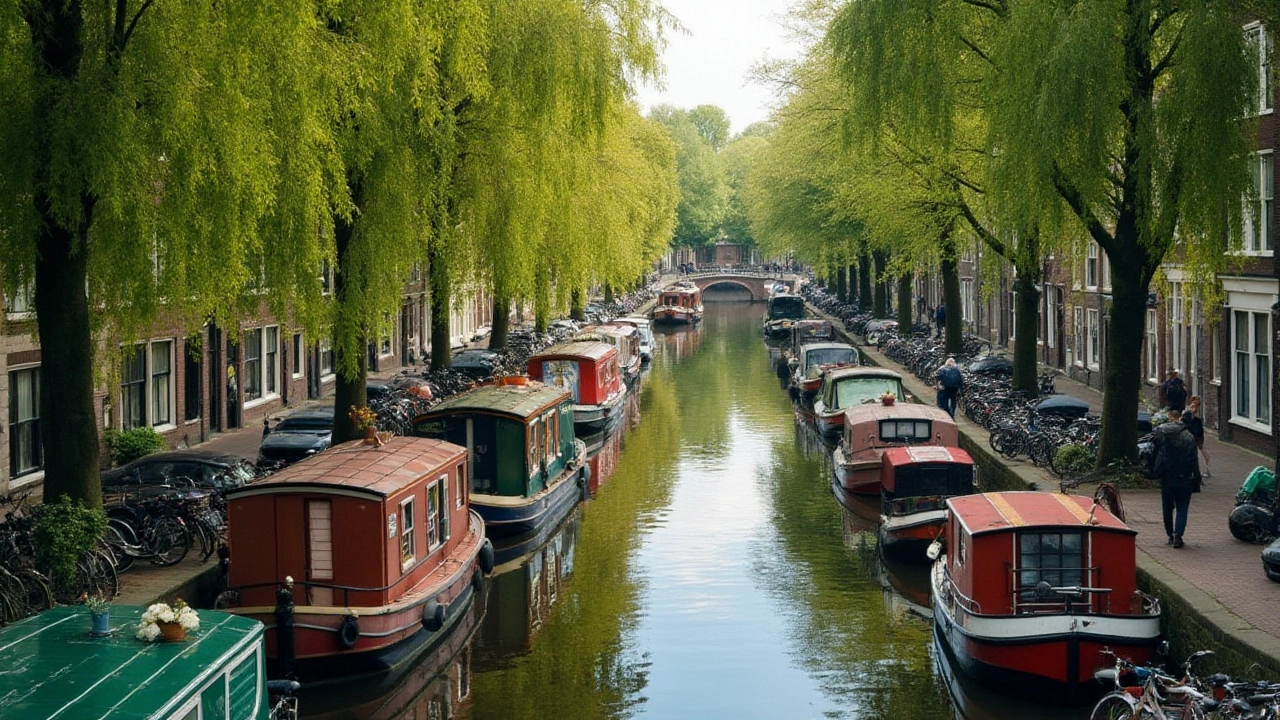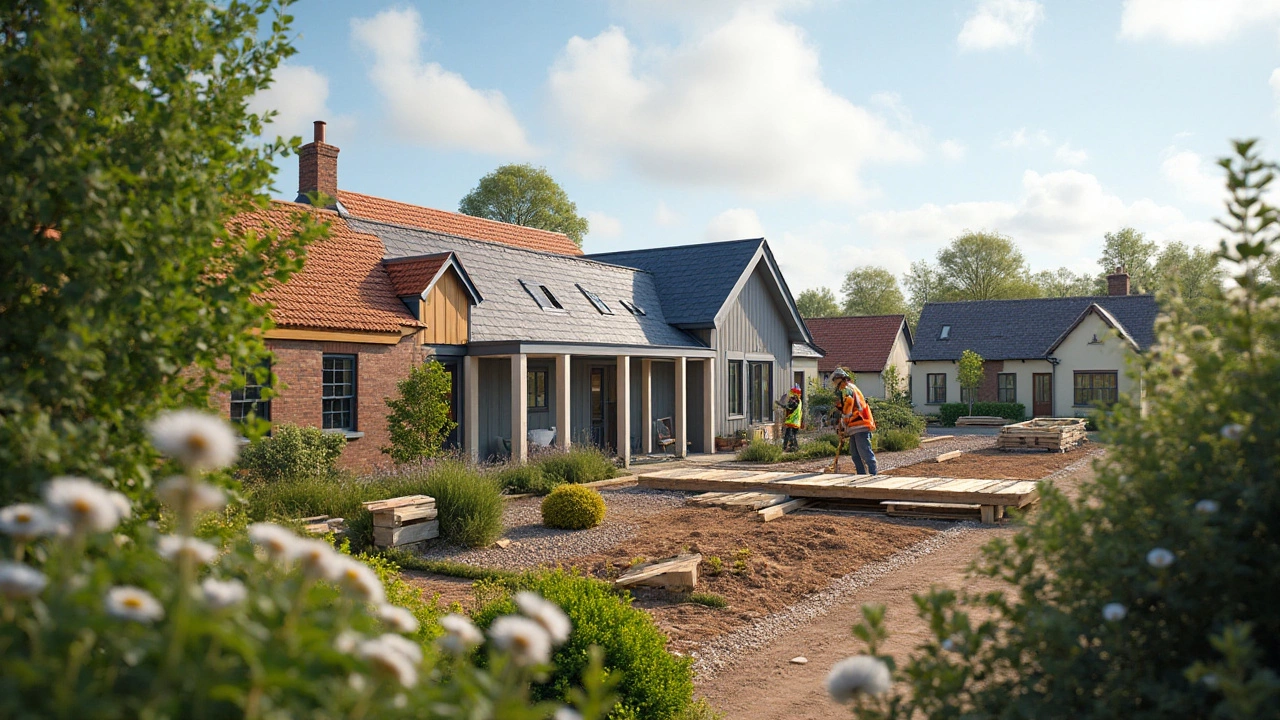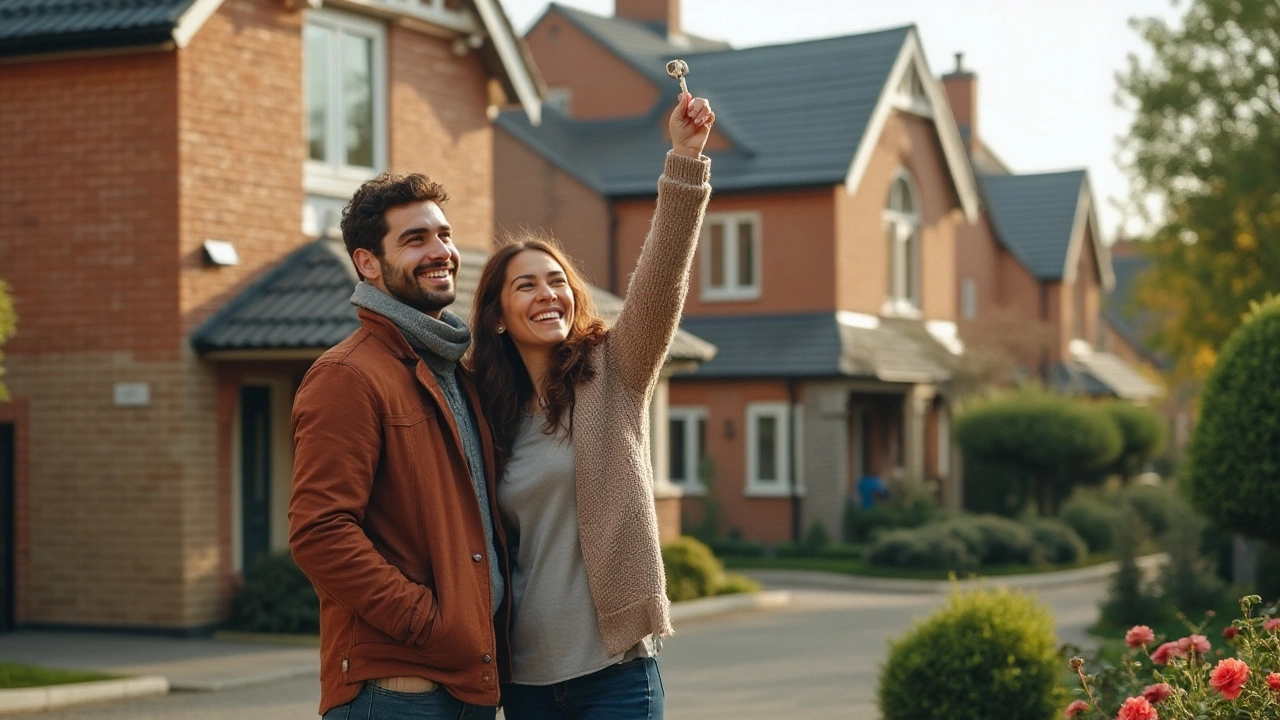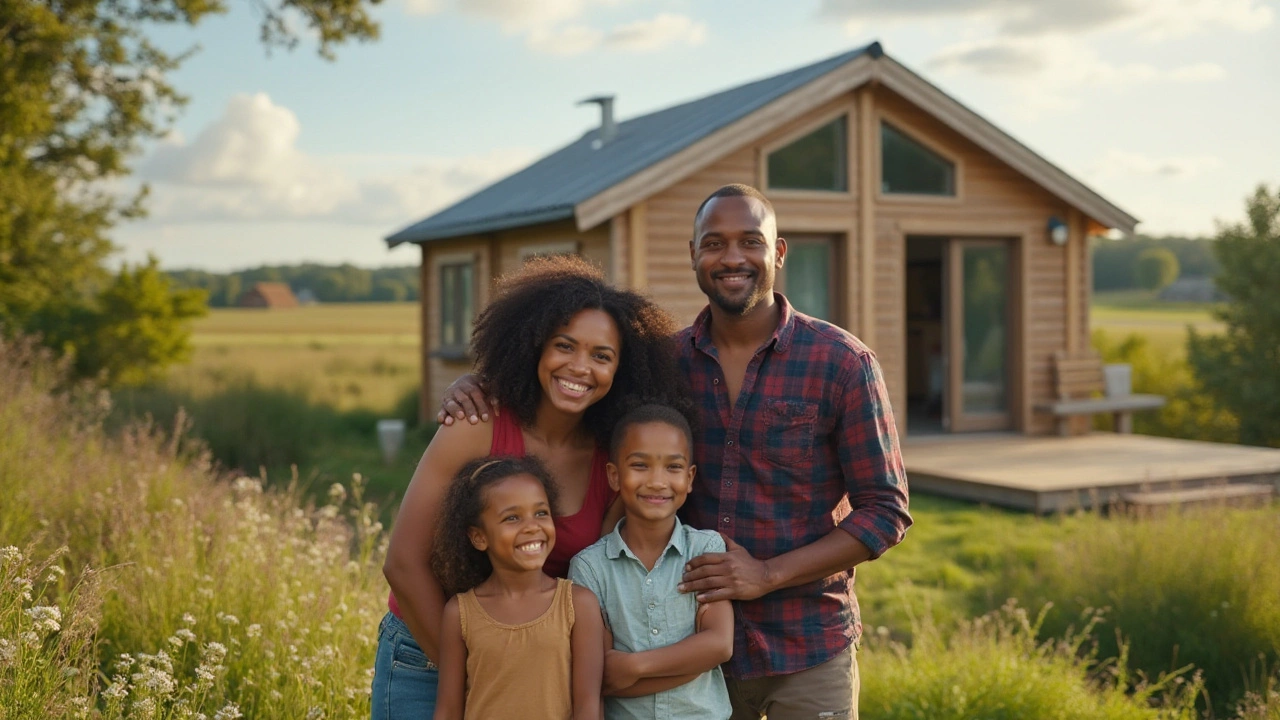Living affordably without reducing your comfort might seem like a daydream to some, but the world of real estate offers various pathways to realizing such dreams. While the image of a sprawling mansion might dazzle, small and well-crafted spaces can bring comfort and functionality without emptying your pockets. The concept of cheap homes extends beyond just your typical fixer-upper. It stretches into innovative spaces that welcome you without burdening your budget.
From the charm of tiny homes that encompass all the necessities within a charismatic compact space to the efficiency and modernity of prefabricated houses that leap the hurdles of traditional construction, affordable living is more achievable than ever. Let's not forget the unique charm of houseboat living, offering you not just a home, but a lifestyle that sails away from the ordinary. Knowing where to look and how to strike a deal can turn the homeownership dream into reality, without straining your finances.
- Exploring Tiny Homes
- The Rise of Prefabricated Houses
- Houseboats and Unconventional Living
- Tips for Bargain Hunting on the Housing Market
Exploring Tiny Homes
In recent years, the idea of embracing cozy, efficient living has captured the imagination of many, as the notion of tiny homes gains traction. These minimalist abodes reflect a cultural shift towards compact living environments that emphasize simplicity and functionality. While it might look like a trend, the movement advocates for financial freedom and environmental sustainability. The allure of tiny homes extends to those yearning for life unanchored by exorbitant mortgages, opting instead for spaces efficiently optimized for their needs. By minimizing square footage and maximizing design ingenuity, tiny homes cater to those who seek key elements of a traditional home but without the accompanying financial burden.
The practical size of most tiny homes is around 100 to 400 square feet, a stark contrast to the average American house size of over 2,500 square feet. These affordable housing options encourage an intimate connection between the inhabitants and their environment. Designers often incorporate multifunctional furniture, hidden compartments, and creative storage solutions to ensure that even in a smaller area, dwellers can enjoy a comfortable lifestyle. An architect from the Tiny House Movement elaborates, "The idea is not just to downsize for the sake of downsizing, but to prioritize one's life by surrounding oneself only with what truly adds value daily."
"The best part of building tiny is that you learn to tailor your home to what defines your life," says architect Jay Shafer, often regarded as the pioneer of the Tiny House Movement.
The financial aspect often surprises those unfamiliar with these homes. Many tiny homes can be assembled for a fraction of what traditional houses cost, landing anywhere between $10,000 to $50,000, depending on customization and materials. This pricing opens the door for more individuals to own property outright, without succumbing to long-term debt. Additionally, since these homes usually have a smaller carbon footprint, utility bills are significantly reduced, adding to the budget-friendly nature of these housing solutions. By adopting off-grid features, such as solar panels or composting toilets, the monthly costs can be further slashed.
Considering the growing community support and resources available for cheap houses like tiny homes—such as meetups, workshops, and online forums—aspiring tiny homeowners can find abundant advice and encouragement. Joining this community not only assists in the journey to downsized living but also offers an enriching group of like-minded individuals who find joy in escaping the conventional confines of real estate. For those who dream of a compact yet fulfilling lifestyle, tiny homes shine as a beacon of efficient, low-cost living.

The Rise of Prefabricated Houses
Prefabricated houses—sometimes known as prefab homes—have been rapidly establishing themselves as a significant contender in the affordable housing market. The allure of these structures lies in their capacity to be both economically and environmentally sustainable while offering the comforts of traditional homes. Over the years, the perception of prefab homes has evolved dramatically. What was once seen as mere temporary or low-quality shelter is now eyed as a smart, efficient housing choice. Prefabricated houses are typically assembled in factories before being transported in sections to the final location, where they are put together like pieces of a puzzle. This method significantly slashes the construction time and cost, making it an attractive option for those looking to enter the housing market without breaking the bank.
The development of prefabricated houses is a testament to advancements in technology and design over the decades. Modern prefab homes are equipped with all the bells and whistles of contemporary living, perhaps even more so given their customizability. Not only are they tailored to adhere to rigorous building standards, but they also appeal to those with artistic tastes. Many come with modular designs that can be adjusted to suit personal preferences, making each home a unique reflection of its occupant's style. According to research conducted by the National Association of Home Builders, about 15% of new homes in the U.S. are now prefabricated, a number likely to grow as production techniques improve and demand increases.
"Prefabricated housing is more than just a building trend, it's a movement towards efficient and personalized homeownership," said an industry report by McKinsey & Company. "We estimate that the market share for offsite construction in U.S. cities could double by 2025 as homeowners gravitate towards these innovative solutions."For budget-conscious buyers, prefabricated houses also offer a tangible reduction in waste and energy consumption during construction. With factory precision, materials are used efficiently, minimizing excess and enabling high standards of insulation, which contributes to lower utility bills over the lifespan of the house. In short, the potential savings on both construction and energy costs make prefab homes a savvy choice for the financially mindful.
The variety of prefabricated homes available today is extensive, ranging from minimalist tiny homes perfect for single dwellers or couples to expansive family residences with multiple bedrooms and lush amenities. Such flexibility extends to the logistical aspects as well; since many components are manufactured before arrival, the entire construction process is usually completed in a matter of weeks rather than months or even years seen in traditional building methods. This expedited timeline means less disruption to the lives of future homeowners, enabling them to settle into their new abode with relative speed.

Houseboats and Unconventional Living
The allure of living on water is not just a romantic notion; it's a growing trend reshaping the landscape of affordable housing. Houseboats are floating dwellings that capture a unique lifestyle combining the tranquility of water with the freedom of mobility, linking the joys of sailing with the permanence of a home. Picture this: waking up to the gentle rocking of the gentle morning waves, surrounded by serene waters that stretch warmly under the sunrise. It's a scene that more people are turning into reality, even here in our bustling modern times. Houseboats offer a blend of affordability, simplicity, and the opportunity of choosing an unconventional living style.
Embracing houseboat living often means opting for a simpler lifestyle, yet modern houseboats are equipped with all the amenities you'd find in a traditional home. Depending on your preferences, these floating abodes cater to minimalist studio layouts or more spacious designs splashed with luxury elements. While a traditional house might require significant investment and additional costs, such as property taxes or extensive maintenance, one of the fascinating facets of budget-friendly houseboats is how they cut down on these expenses. In places with high real estate prices, like San Francisco or London, waterways offer an escape route to high costs. You not only save money, but also gain the flexibility of location, as mooring spots can be changed, giving you an ever-changing view and community. Environmental enthusiasts appreciate the lower carbon footprint associated with this way of life, as many houseboats utilize renewable energy sources such as solar panels to complement their power supply needs.
"Living on a houseboat provided an escape from the routine while offering financial freedom," says Marina Barlow, author of 'Life Afloat: Sailing Into Simplicity'. "Not being rooted to one spot feels liberating and allows me to experience a different sunset every evening."
Before anchoring your decision to live on water, consider a few essential aspects such as the region's climate, mooring fees, insurance specifics, and boat maintenance. While some might think these nuances form intangible obstacles, they're quite manageable with the right preparation and mindset. Your research should include speaking with current houseboat owners and visiting marinas to understand their lifestyle firsthand. Besides, the community among houseboat dwellers is an added bonus, as there's a unique camaraderie and shared experience that landside living rarely captures. Think of it as a neighborhood afloat, where swapping stories and resources, helping each other with boat maintenance, and participating in floating festivals are common occurrences that enrich life even more. A deep connection to nature, paired with an adaptable lifestyle, crafts a unique niche for those curious enough to dive into it.
There’s certainly a trade-off involved with choosing this affordable housing option, but to many, the trade-offs are worth the cost savings and the unconventional experience itself. You'd be joining a growing number of people who see living on a houseboat not just as a temporary experiment but as a deeply rewarding adventure. Statistics even point towards a rise in houseboat communities, with an approximate 12% increase in new registrations in coastal cities over the past few years. Make sure to consider how life will evolve in a space that might seem small to landlubbers, but those who've made this choice consistently speak to an enriched quality of life that seems to grow day by day. As the sun sets over the horizon, you might find yourself asking if the waterborne life is exactly what your soul has been craving.

Tips for Bargain Hunting on the Housing Market
In the world of real estate, patience truly is a virtue. You might just be eyeing that quaint bungalow on the edge of town or the inviting affordable housing complex down the block. Whatever it may be, understanding the right time to buy is paramount. Housing markets can be as unpredictable as they are boundless in opportunity. Seasonal shifts often dictate the volume of sales and potential discounts. Generally, late fall and winter months are periods where sellers may be more willing to negotiate, thanks to a slowdown in activity. This isn't just hearsay; according to experts at Realtor.com, homes listed in these months can be up to 5% cheaper than those listed in the pinnacle of spring's market rush.
But timing isn't everything. Getting your foot in the door also requires a keen eye for potential. Often, properties in need of slight renovations aren't afforded the luxury of being prominently featured in listings. Yet these same homes can offer hidden value beneath a layer of updates or simple repairs. By aligning with a savvy agent who understands the art of negotiation and market trends, buyers can often strike gold with a home that others overlook.
Equally as crucial is securing a solid financial premise. It's recommended to get pre-approved for a mortgage, establishing not only how much you can afford but showing sellers you're a serious contender. With a pre-approval on hand, your bargaining power can increase significantly.
Home buying is competitive, but there are always opportunities to be strategic. Be bold yet patient—much like fishing. After all, while it’s tempting to catch the first fish you see, sometimes it’s the one that waits that ends up with the larger prize. ― Unknown
A keen understanding and careful reading of the local market also provide an edge. Popularity often comes with a price tag. While some areas experience a surge due to amenities, safety, or even culture, adjacent neighborhoods could be on the verge of similar recognition. Investing in such areas can provide a dual advantage of cost savings and potential equity growth in years to follow.
Finally, technology is on your side. Utilize real estate websites that explore beyond listings. Features often include market assessments and price trends, providing you with a fuller scope. You can set alerts for properties that fit your criteria or subscribe to reports forecasting local real estate momentum. Arm yourself with this knowledge, and you'll engage in the housing market firing on all cylinders, poised to seize the cheapest homes worth considering.
